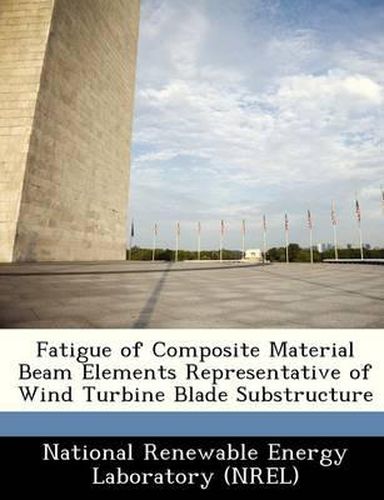Readings Newsletter
Become a Readings Member to make your shopping experience even easier.
Sign in or sign up for free!
You’re not far away from qualifying for FREE standard shipping within Australia
You’ve qualified for FREE standard shipping within Australia
The cart is loading…






The database and analysis methods used to predict wind turbine blade structural performance for stiffness, static strength, dynamic response, and fatigue lifetime are validated through the design, fabrication, and testing of substructural elements. We chose a test specimen representative ov wind turbine blade primary substructure to represent the spar area of a typical wind turbine blade. We then designed an I-beam with flanges and web to represent blade structure, using materials typical of many U.S.-manufactured blades. Our study included the fabrication and fatigue testing of 52 beams and many coupons of beam material. Fatigue lifetimes were consistent with predictions based on the coupon database. The final beam specimen proved to be a very useful tool for validating strength and lifetime predictions for a variety of flange and web materials, and is serving as a test bed to ongoing studies of structural details and the interaction between manufacturing and structural performance. The beam test results provide a significant validation of the coupon database and the methodologies for predicting fatgue of composite material beam elements.
$9.00 standard shipping within Australia
FREE standard shipping within Australia for orders over $100.00
Express & International shipping calculated at checkout
The database and analysis methods used to predict wind turbine blade structural performance for stiffness, static strength, dynamic response, and fatigue lifetime are validated through the design, fabrication, and testing of substructural elements. We chose a test specimen representative ov wind turbine blade primary substructure to represent the spar area of a typical wind turbine blade. We then designed an I-beam with flanges and web to represent blade structure, using materials typical of many U.S.-manufactured blades. Our study included the fabrication and fatigue testing of 52 beams and many coupons of beam material. Fatigue lifetimes were consistent with predictions based on the coupon database. The final beam specimen proved to be a very useful tool for validating strength and lifetime predictions for a variety of flange and web materials, and is serving as a test bed to ongoing studies of structural details and the interaction between manufacturing and structural performance. The beam test results provide a significant validation of the coupon database and the methodologies for predicting fatgue of composite material beam elements.